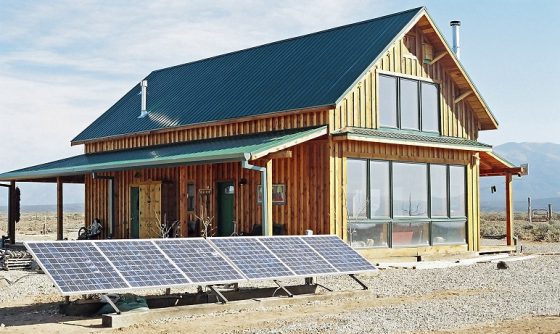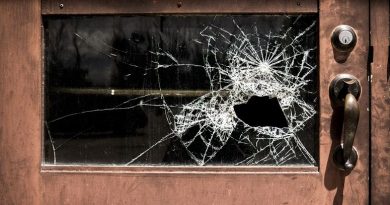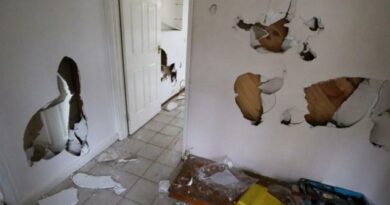This is how to get off the grid, step-by step…and what it will cost for a phased approach
Taking a long-term view of SA’s dire Eskom predicament
[Opinion by Teresa Settas, Marketing Director of the One Energy Group]
Many people are looking for back-up power solutions for their homes and businesses to see them through unpredictable and productivity-killing Eskom load shedding. They are also fed up with the rocketing costs of electricity and mooted penalties for making alternative arrangements to get the power that Eskom cannot reliably or affordably supply.
The parlous state of municipalities should also be of great concern, with outright collapses of services and governance a daily occurrence. An alarming increase in cable theft and failing electrical infrastructure at municipal level are as harrowing as Eskom’s dire state of financial and technical affairs. It all compromises your productivity, safety, security and quality of life.
Apart from load shedding and power outages, you will also be paying 15% more for grid electricity and this frustration from 1 April 2021. Energy experts expect Eskom to gun for a further 15% increase in the average tariff in 2023 – that’s 30% more in just two years, and not withstanding the already more than 450% increases Eskom has taken in the last 10 years. Eskom’s ongoing energy supply woes are also unlikely to be resolved in the near term, so South Africans either need to learn to live with load shedding, or take steps to reduce their reliance on the utility grid.
Any investment you make into an energy back-up solution must be with a long-term view to getting you closer to greater grid independence, step-by-step. It’s crucial to consider where South Africa’s energy future is headed, and what this means for your home, your business, your productivity and your security. R30k spent on an unsuitable back-up solution today detracts from your ultimate objective of grid-independence and self-sufficiency.
Start your journey effectively and affordably, with a scalable, quality solar PV hybrid solution that takes care of your immediate needs for back-up power during load shedding and power failures and allows you to scale up in future to self-generation by adding solar panels. Initially your system is configured as a back-up UPS type solution to provide backup only during outages. Then, as budget allows, expand with solar panels to generate your own power, providing back-up AND saving you a fortune in electricity costs.
Not all inverters offer this scalable functionality so it’s essential to work with a renewable energy partner who is experienced in this field and understands and works with your long-term objectives. Work with a qualified renewable energy partner with a solid and long-standing track record in the industry, and that will be around to support your system for many years to come.
Start with a UPS-type configuration to provide back-up for load shedding and outages, and then add generation capacity with solar panels later
(For purposes of this illustrative exercise we have used a Goodwe inverter configuration, however there are other quality solutions available.)
• Install a 4.6kW Goodwe inverter with one 3,5kWh Pylontech li-ion battery – starting cost is around R71 000 including professional installation and all the required electrical protection. It is initially configured as a UPS, however it has a charge controller which means it can take solar panels at a later stage to operate as a hybrid solar system.
• It also provides clean power and perfectly suited for sensitive electronic equipment like computers, routers, fridge, TV and so on.
• Add solar panels at a later stage – 4kW of solar panels will cost around R47 000, fully installed with the necessary electrical protection.
• Add an additional 3,5kWh li-ion battery if needed, at a later stage – around R21 000.
• If you want to radically reduce your monthly electricity costs at the same time and take your grid independence next level, take your water heating off the grid with a solar geyser. An electric geyser accounts for between 30-40% of your monthly electricity usage in your home, so this is the most crucial starting point to reducing your daily electricity load, and which means you can also buy a smaller and more affordable PV solution. A 200-litre solar geyser, fully installed is around R27 000.
By adding solar panels later, your system will generate its own electricity and charge your batteries using the sun’s energy, and not the grid. If you need additional and longer battery back-up to supply more of your home/office electricity requirements, you can also add more Li-ion batteries. Li-ion batteries have a phenomenal life span – with 6000 cycles at an 80% DOD – that’s a lifespan of 16 years (based on one cycle per day)!
By splitting your essential and non-essential loads at your distribution board, a 4.6kW Goodwe inverter with a 3.5kWh Pylontech battery, 4kW solar panels and a solar geyser will take an average household currently using around 25kWh of power per day to around 80-90% off the grid. No more outrageous electricity bills and you won’t even know when there is load shedding or a power outage.
Starting your journey this way is a crucial step towards greater grid-independence and lot more affordable than people realise. If your power requirements are more than this (after putting energy efficiency measures in place), then you can also start with a bigger inverter from the outset and build up in the same way as described above.
With the advances in solar technology and pricing, you can hedge your electricity costs for the next 20-25 years and secure your supply at less than half the price that Eskom can supply it, by making savvy investment decisions today. Any investment you are going to make into alternative energy solutions must take into account the long-term view of where SA’s security of electricity supply and costs are headed – and that’s down the tubes and through the roof respectively.
Avoid at all costs the cheap, quick fixes sold by snake oil salesman who promise you the world with a R10k inverter – if it were that easy and capable of taking you off the grid, everyone would have done it long ago. There are many unqualified fly-by-nights who have popped up, with even more questionable tech offerings and sub-standard installation quality. Buyer beware.
What is an essential vs non-essential load?
Your essential load consists of the appliances and equipment that you want to be able to power up in an outage while non-essential is exactly that – items that are not necessary or vital during an outage. By splitting your loads, you are able to use your batteries for longer to power up the essential equipment. Secondly, you also reduce the capital outlay needed on a bigger PV system and battery capacity if you were to try and power up everything in your home/office.

How long will my battery last?
The amount and duration of battery back-up is dependent on two factors – the size of the battery bank and the size of the load drawing power from it – in other words how many appliances you have running at the same time, and the total wattage being drawn by these appliances. It’s one of the reasons why we split essential and non-essential loads, to extend the battery capacity.
For purposes of this exercise, we used one 3.5kWh li-ion battery which allows for an 80% depth of discharge. This means that once your battery is discharged to having 20% power left, it is automatically disconnected by the inverter to protect your battery’s lifespan. You can of course add additional li-ion batteries if you require more back-up.
Estimated battery running times based on a 3.5 kWh li-ion battery:
2000W = 1.4 hours
1000W = 2.9 Hours
800W = 3.6 Hours
600W = 4.8 Hours
400W = 7.1 Hours
200W = 14.3 Hours
With so many new renewable energy products and suppliers in the market with varying levels of quality, performance, technical expertise and installation experience, its often very difficult to know what the right system is for your needs.
Be sure to work with a renewable energy partner that that complies with safety regulations, that your installation is 100% safe, sound and optimised for your long-term needs, that your system is aligned to the NRS 097-2 for embedded generation, and that provides the savings and performance you expect and will be around for years to come to fulfil on warranties and other servicing requirements.
For more information www.oneenergy.co.za




